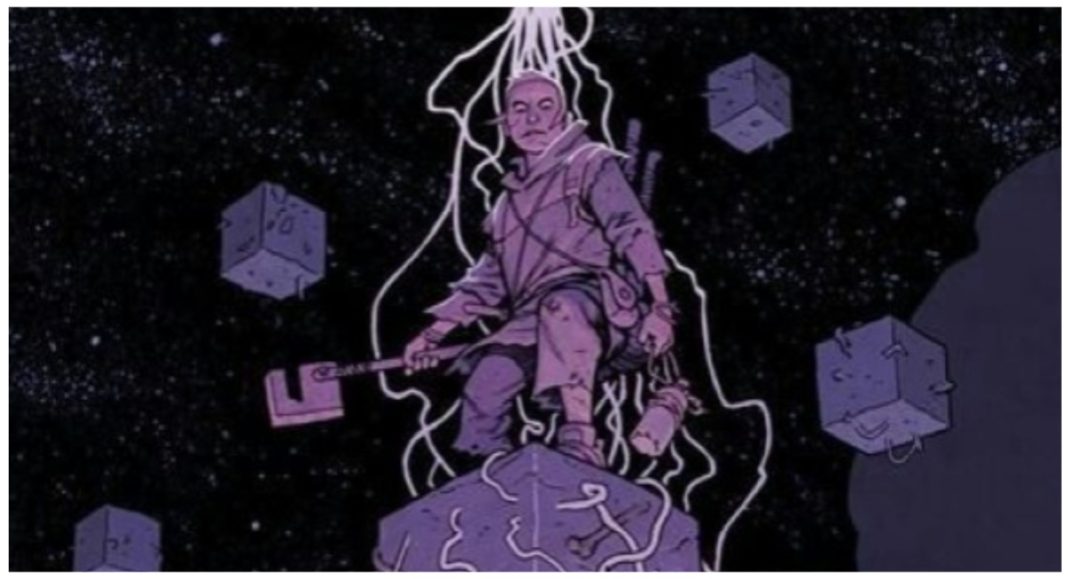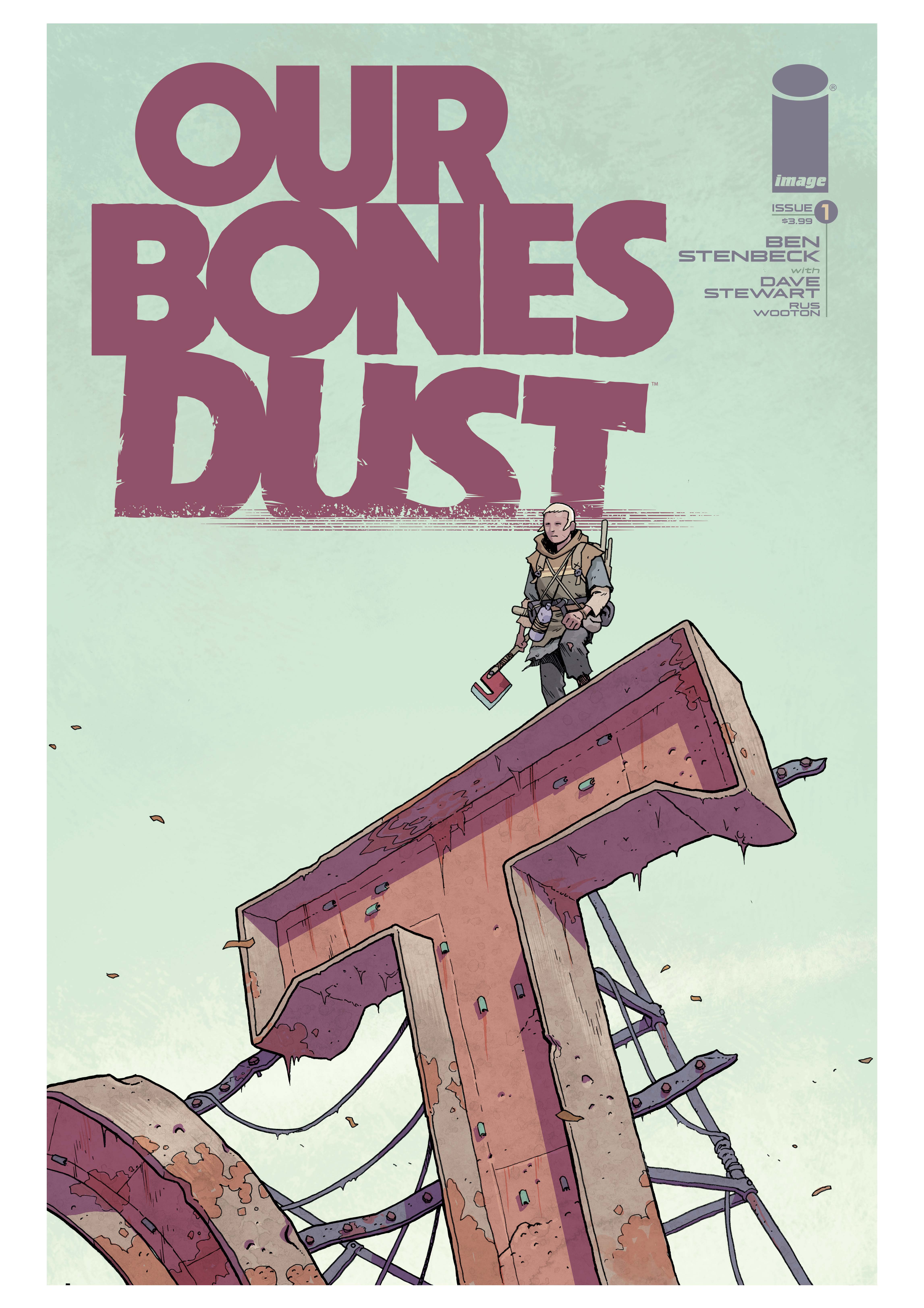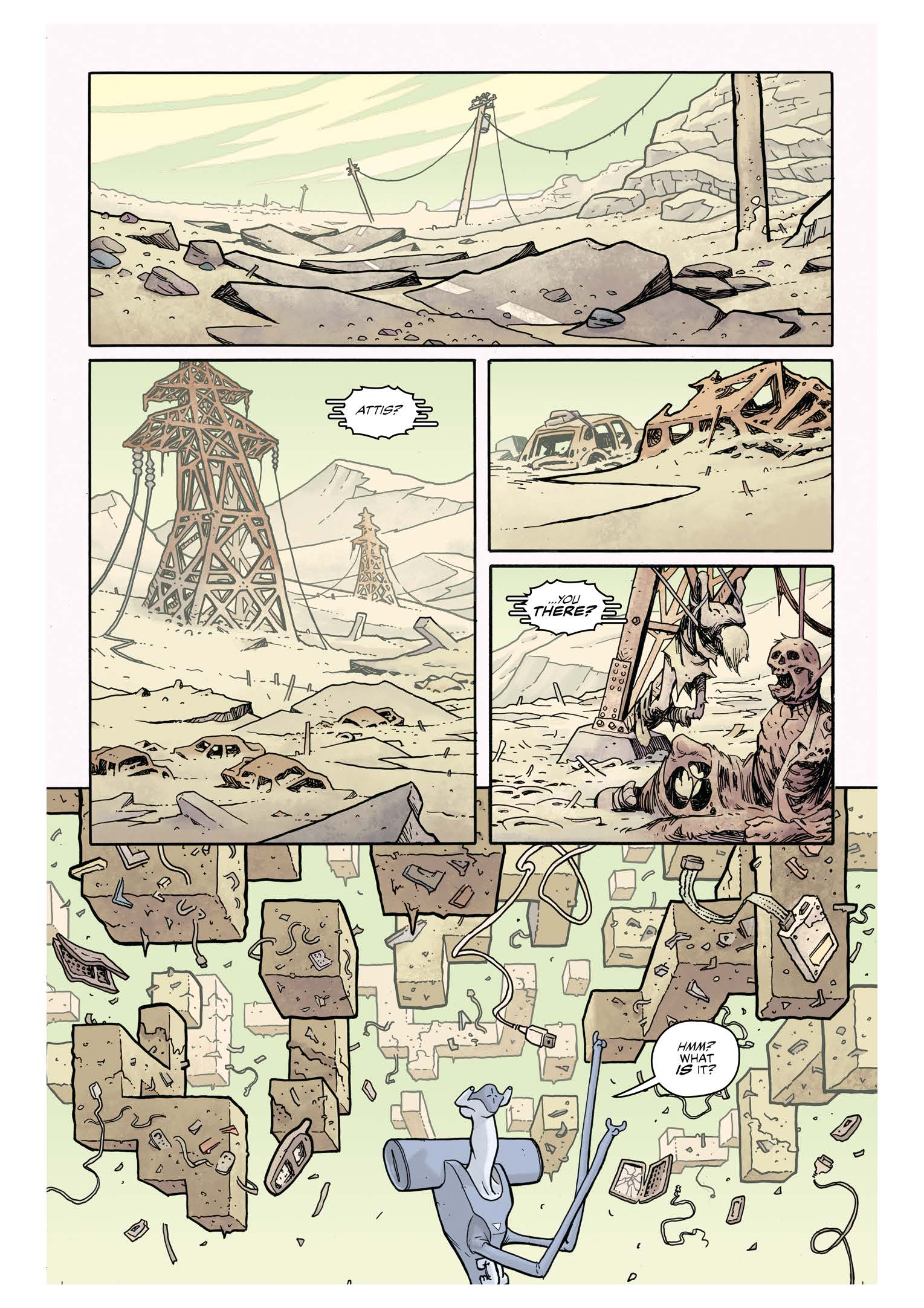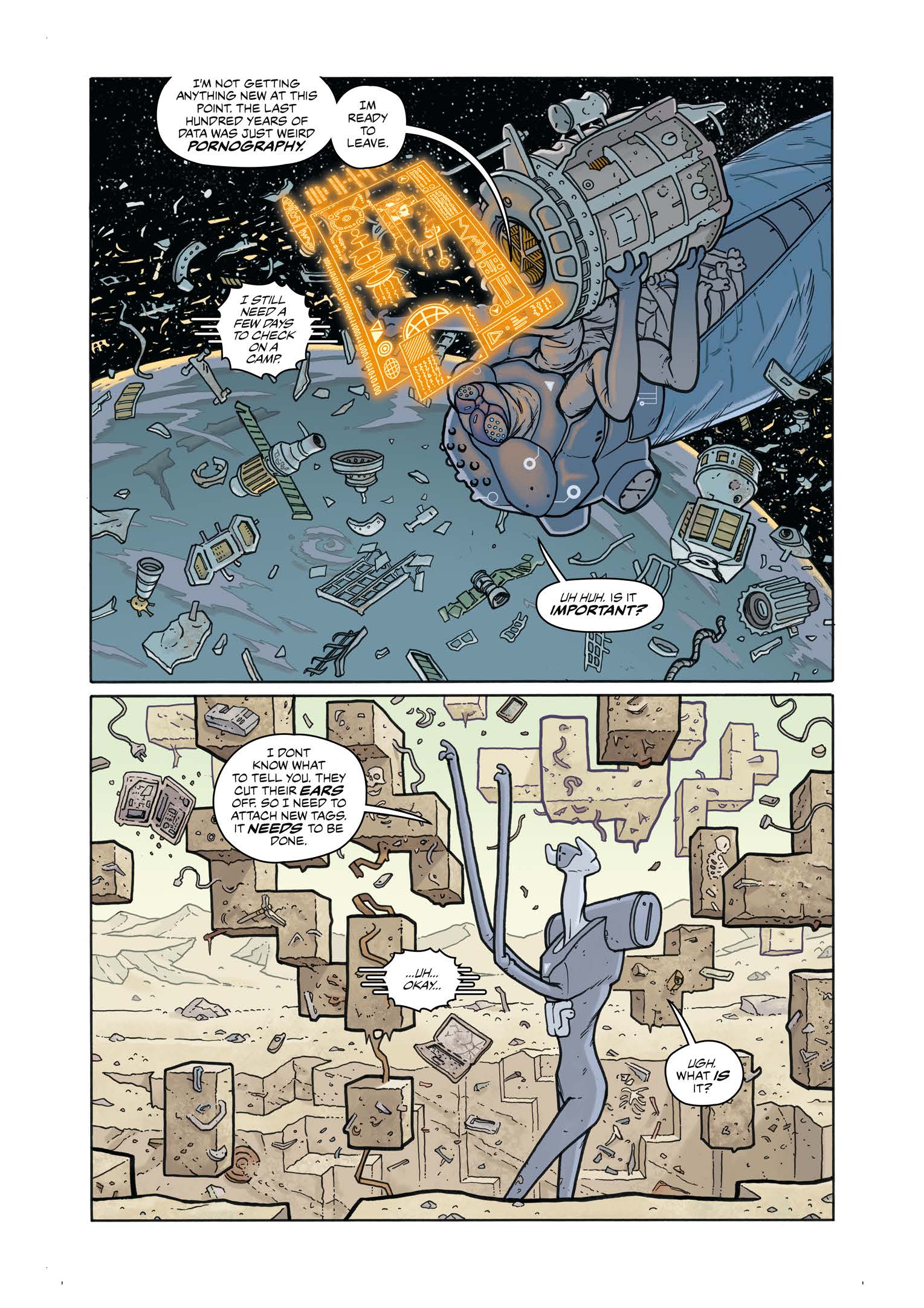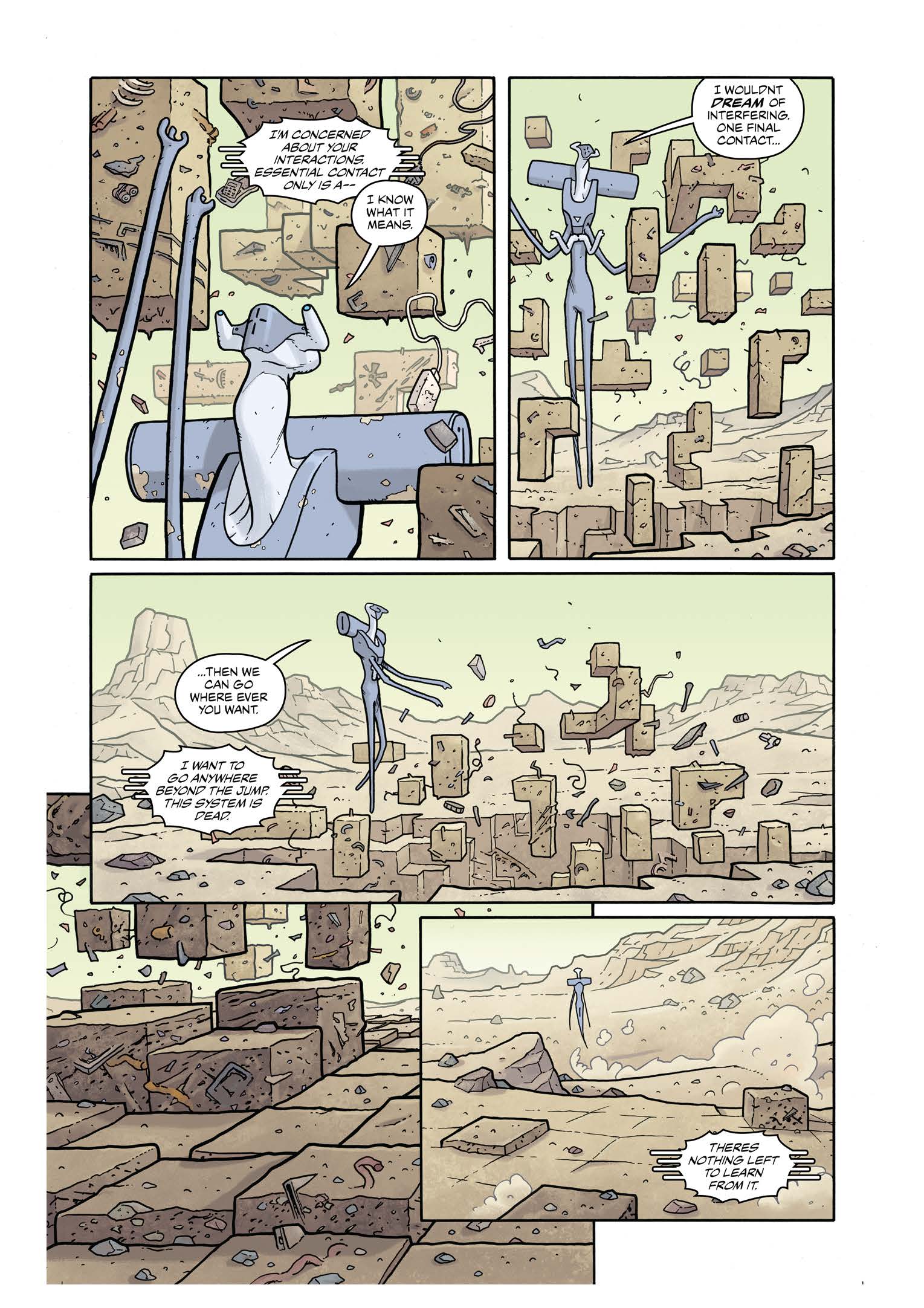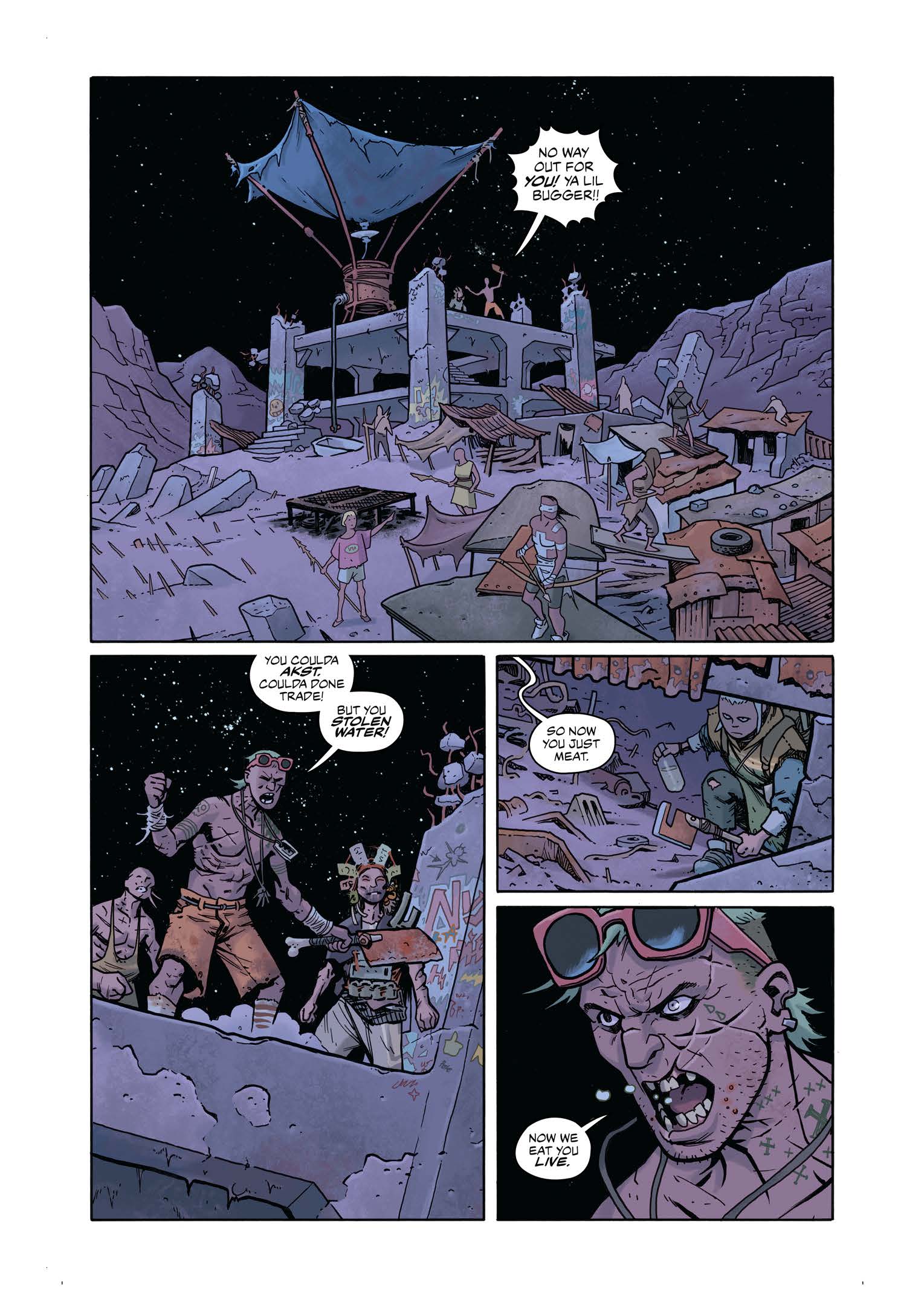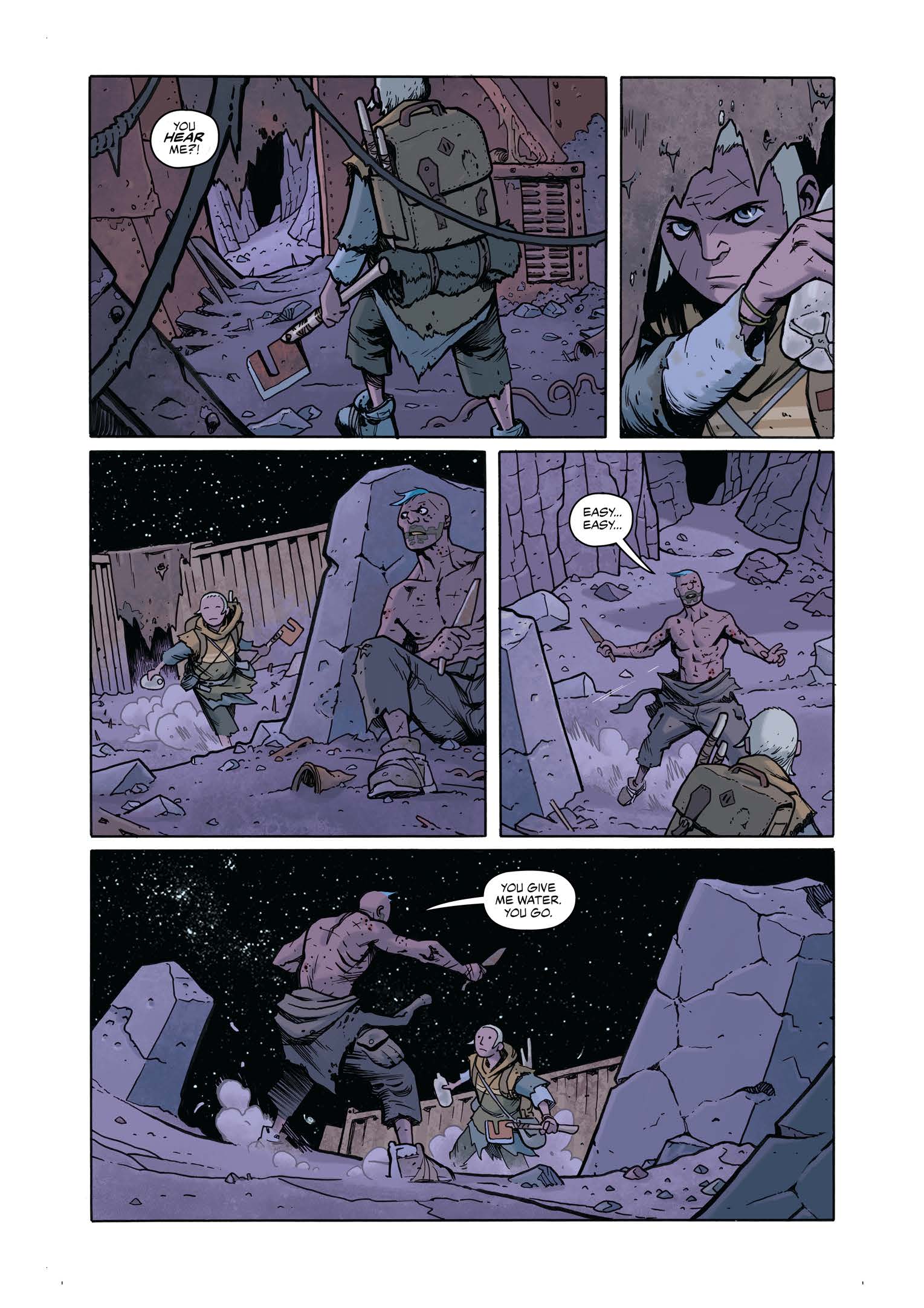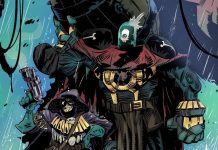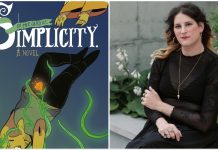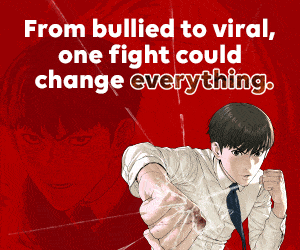If you haven’t heard already, Our Bones Dust is about an AI archaeologist on its last mission to post-apocalyptic Earth that finds a feral child that’s both predator and prey. Together they form an unlikely bond and take on a family of nomadic cannibals and the dangers of the wasteland.
This world could only come from the brain of the first solo outing of long-time Mike Mignola collaborator Ben Stenbeck, artist on Baltimore, Witchfinder, Frankenstein, and KosHChei!
Luckily for you, Image released the Our Bones Dust trade paperback collection today in comic stores near you! To follow up on its release, The Beat reached out to Stenbeck over email for an interview to speak about the feedback his comic has received from fans and critics as well as its success!
DIEGO HIGUERA: The concept of an AI archaeologist and a feral child teaming up in a post-apocalyptic setting is incredibly unique. What inspired you to create such an unconventional duo?
BEN STENBECK: The original idea (A decade ago) was much simpler, and shorter. The AI beings were not in it, the story was just all about this awful apocalyptic world. It was so bleak I just abandoned the idea for a few years. Then I was reading a lot about AI (This was before Ai turned into the thing it is right now) And once I had those AI characters I realized I could make this story a bit more fun and a lot less miserable. The kind of thing I would want to read.
HIGUERA: “Mad Max meets Moebius” is a captivating description of your comic by Duncan Fegredo. How did this comparison influence your artistic and storytelling choices for Our Bones Dust?
STENBECK: It’s an apt comparison because I adore both of those things. Not that my skills are comparable to George Miller or Moebius. I grew up on Mad Max. Aesthetically I tried to steer away from that kind of look though, I wanted the clothing to look more like it was just scavenged and keep things grounded in the real world. But Mad Max is definitely an influence. The whole story for me comes from the kind of short stories Moebius did (Also Otomo). That’s my favorite stuff from those guys. They are just getting something out of their system and not trying to create the next big IP.
HIGUERA: Your collaboration with Mike Mignola on titles like Baltimore and Witchfinder is well-known. How did your previous work together influence or prepare you for creating this new series?
STENBECK: I’m not sure if there’s any specific example, but working with Mike for 15 years is going to sharpen your storytelling. Funnily I was less confident about writing my own thing now than I would have been 15 years ago. Which I think is healthy. I think that just made me work harder.
HIGUERA: The artwork in Our Bones Dust has been described as stunning and atmospheric. Can you share some insights into your artistic process and the visual style you aimed to achieve?
STENBECK: I made a conscious effort to do something different to the work I’ve done on Mignola books. More clean line and less blacks. I tried to art direct Dave’s colors on it, but we realized early on I was steering him in the wrong direction. So once he started just doing his own thing he really brought it all to life.
HIGUERA: The world-building in Our Bones Dust seems intricate and immersive. What were some of the challenges you faced in creating a believable post-apocalyptic landscape, and how did you overcome them?
STENBECK: The world building was the easiest part to me. This world just sort of lives in my head, I know more about it than I put in the book. I think that sort of thing is the fun part, it’s the easy part of something like this. It’s sitting down and choosing what parts of this world are relevant to telling the story that are difficult. I left so much of this world out because it just didn’t need to be there.
HIGUERA: Critics have praised your solo debut as a significant achievement. How does it feel to receive your work so positively from fans and fellow creators?
STENBECK: That’s been hands down the best part of this experience, I wasn’t expecting much, I sort of thought it would fly under the radar and a lot of people would hate it. So when I got praise from other comics pros and the reviews were all glowing it was an incredible sense of validation to have people respond so well to my goofy little story.
HIGUERA: Given the diverse reviews and perspectives from fans, is there a particular message in your work that you wish more readers had noticed? For those who have recognized it, how did their understanding of that message impact you?
STENBECK: That’s tough to answer. There’s some stuff I’ve never heard anyone talk about, And I wonder if I was too subtle or if no one thinks it’s worth mentioning. I don’t know. Either way, if some stuff gets missed I’m sure it all adds something to the overall feel of the book, and I’m just glad it’s been well received as it is. One thing that hasn’t come up is whether the kid is a Boy or a Girl. I like the fact that some reviewers assume it’s a boy and some assume it’s a girl. It’s not meant to be any special point. I just liked the idea of people being able to decide for themselves who they want that kid to be.



